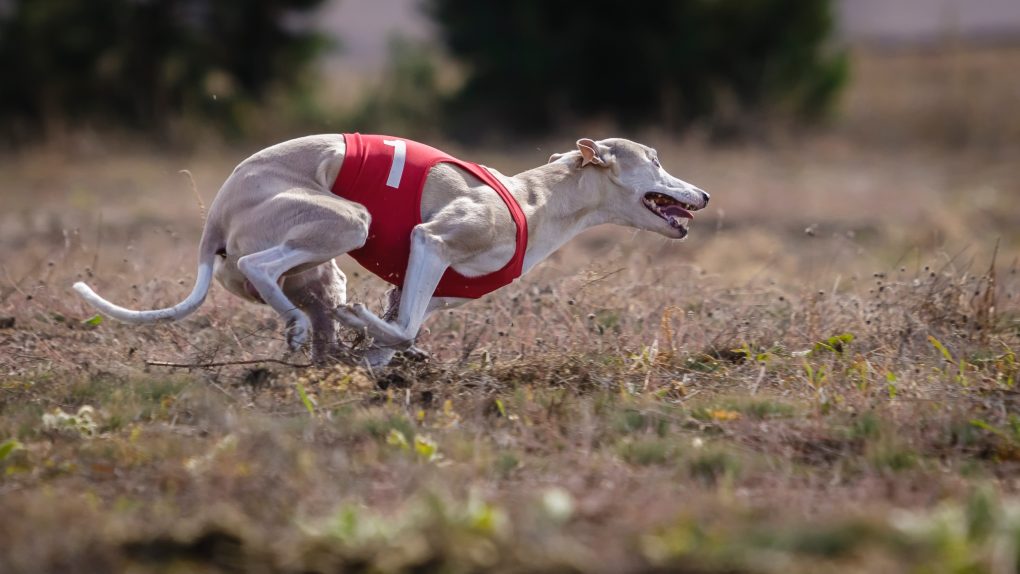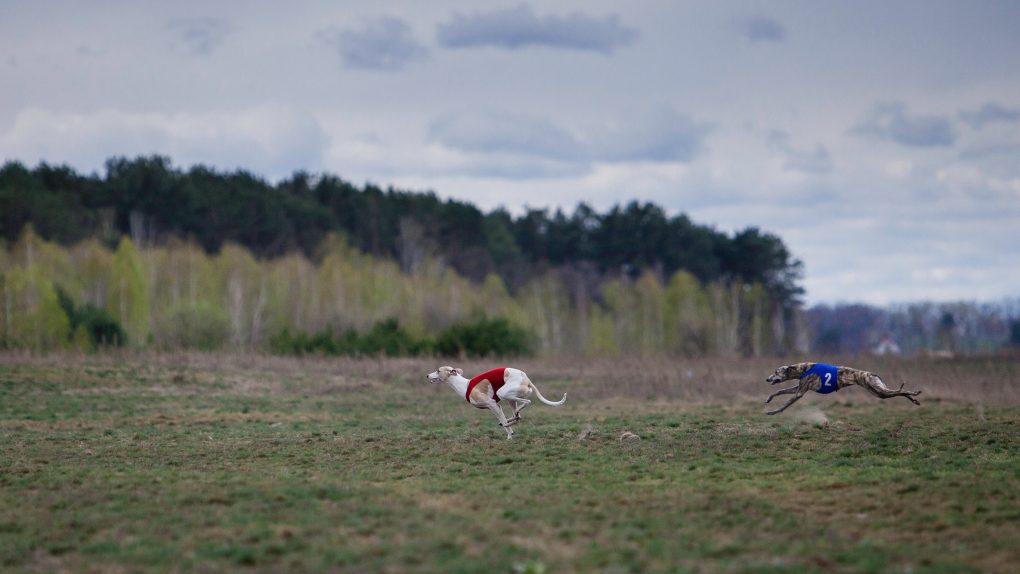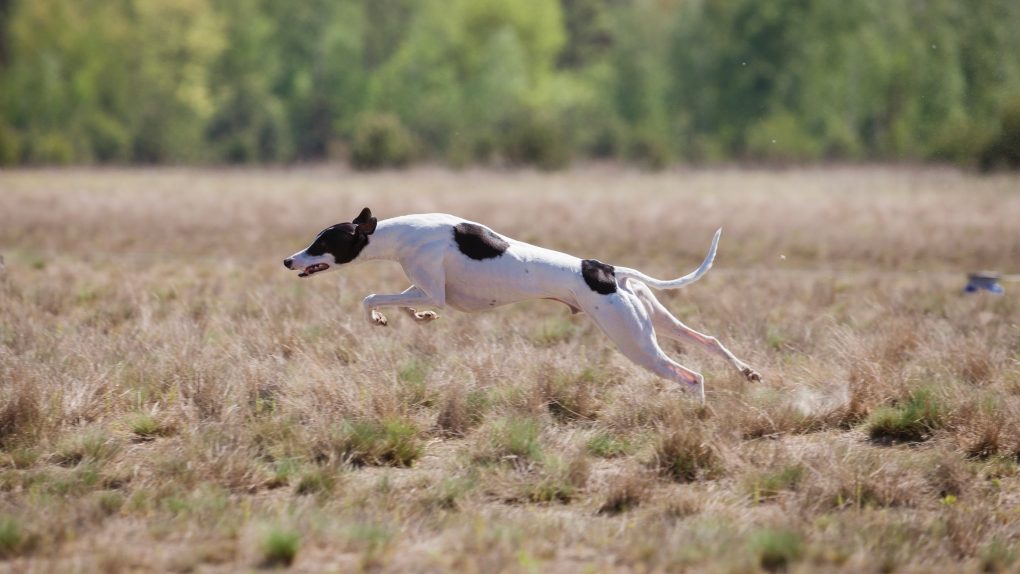Can Whippet Run Long Distances: All About Whippets Running Ability
Whippets can run for short distances at high speeds and are often used in racing and lure coursing competitions. However, they may need more endurance and stamina to run long distances. Running long distances with your whippet can be thrilling, but it can be challenging. If you want to run long distances with whippets, you need to know what they can do and how you can help them unleash their speed potential.
Table of Contents
Whippets and Racing


History
Whippets are known for their racing abilities, earning the nickname “the poor man’s racehorse.” Racing whippets have been used in numerous variations of racing since the 19th century, including sprint, endurance, and hare racing. They excel at racing because of their speed, agility, and endurance.
In sprint racing, whippets run short distances (typically 200-500 meters), while in endurance races, they can run longer distances (up to a mile). Whippets are also known for sprinting fast after hare lures, known as “flash racing.”
In sprint and endurance racing, whippets are held to strict weight specifications, which require them to be fit and healthy. This requires whippets to be groomed and fed frequently, caring for their bodies and minds.
Speed
Whippets can sprint up to 33-36 miles per hour, making them the fastest dog breed for their weight. Additionally, whippets are known for their long legs and flat-out speed, which gives them a stamina advantage over other breeds. Due to their high metabolism and lean body mass, whippets can get fit and healthy even with minimal exercise.
Overweight whippets may not reach the same top speeds as dogs of perfect weight, but they can still run long distances.
Factors That Make Whippets Run So Fast
Muscle Fiber
Whippets have a high percentage of fast-twitch muscle fibers that generate quick bursts of power and speed. These muscle fibers are designed for short, intense periods of activity rather than prolonged endurance activities. This means that while Whippets may have impressive sprinting ability, they may need more stamina to maintain high speeds for long periods.
Lean Build
Whippets have a lean and muscular body structure well-suited for running, confirming with PetMD. Their long and slender legs, deep chest, and flexible spine help to reduce wind resistance and improve their stride length.
Strong Cardiovascular System


Whippets have a robust cardiovascular system that efficiently pumps oxygenated blood to their muscles during exercise. This helps to delay the onset of fatigue and allows them to maintain high speeds for short distances.
The heart and lungs of a Whippet work together to deliver oxygen to the muscles, which is essential for producing energy and supporting muscle function. The heart of a Whippet is solid and efficient, which means it can pump blood to the muscles at a high rate, supporting their activity during exercise.
Whippets also have a high respiratory rate, which helps them to take in oxygen more quickly and efficiently during exercise. This, combined with their robust cardiovascular system, helps them to maintain high speeds for short distances without experiencing excessive fatigue or breathlessness.
Tips to Develop a Running Relationship With Your Whippet
Start Slow
To develop a running relationship with your whippet, start slow and gradually increase the speed of your runs over time. Whippets can reach up to 36 miles per hour, so you should pace yourself to avoid injury. Try varying the route, timing, and pee breaks to encourage whippets to keep running long distances. Rewards can also help motivate them to run longer distances. In addition, whippets are easy to train and make good running partners for people of all ages and experience levels.
Make It Fun
You can make running fun for both of you in several ways, including bringing your whippet’s favorite toys and treats. Try running in different locations to keep them from getting bored. Additionally, be patient when training your whippet; use treats and praise when working with them.
It may take some time before your whippet is ready for long-distance runs, so start slowly and gradually increase your running distance and pace. Finally, avoid using rough corrections, as these can be more harmful than helpful when training a dog.
Be Patient


You must be patient and follow a few essential tips to ensure your whippet is safe and appropriately trained. Before starting any running exercise with your whippet, it’s essential to obedience train them such as “sit,” “stay,” and “come.” This will help them learn how to behave while running alongside you. Another helpful tip is recognizing the body movements that lead up to the whippet, making a wild dash.
By anticipating these signs, you can intervene and prevent accidents from happening. Finally, waiting for your whippet to become disinterested in you before taking off running together is vital. You can have fun and stay safe by respecting their needs and boundaries.
Helping Your Whippet Unleash Its Speed Potential
Balanced Diet
Whippets require a balanced diet to help them run at their best. They need protein and carbs to support their energetic and long-distance racing lifestyles. To help keep their joints healthy, give your whippet supplements such as fish oil or glucosamine. This can help reduce the risk of arthritis and other joint problems.
Regular Exercise
Regular exercise can help the whippet reach its full speed potential. To improve their endurance, train whippets over some time and make sure they are getting their daily exercise. Agility training or lure coursing can help build a whippet’s speed and endurance. Whippets can reach up to 35 miles per hour with fast acceleration, so engaging them in agility training or lure coursing can help build speed and endurance. With the proper training, whippets can become great running companions.
Trim their Nails
Toenails should be clipped about once a month to keep your dog running smoothly. Whether you opt for a quick and easy nail clipper or invest in professional nail trimmers, remember to be gentle and use a dog-safe cleanser to avoid damaging your dog’s skin. Additionally, rough corrections during trimming can cause injury to the ears, so it is essential to avoid these actions.
